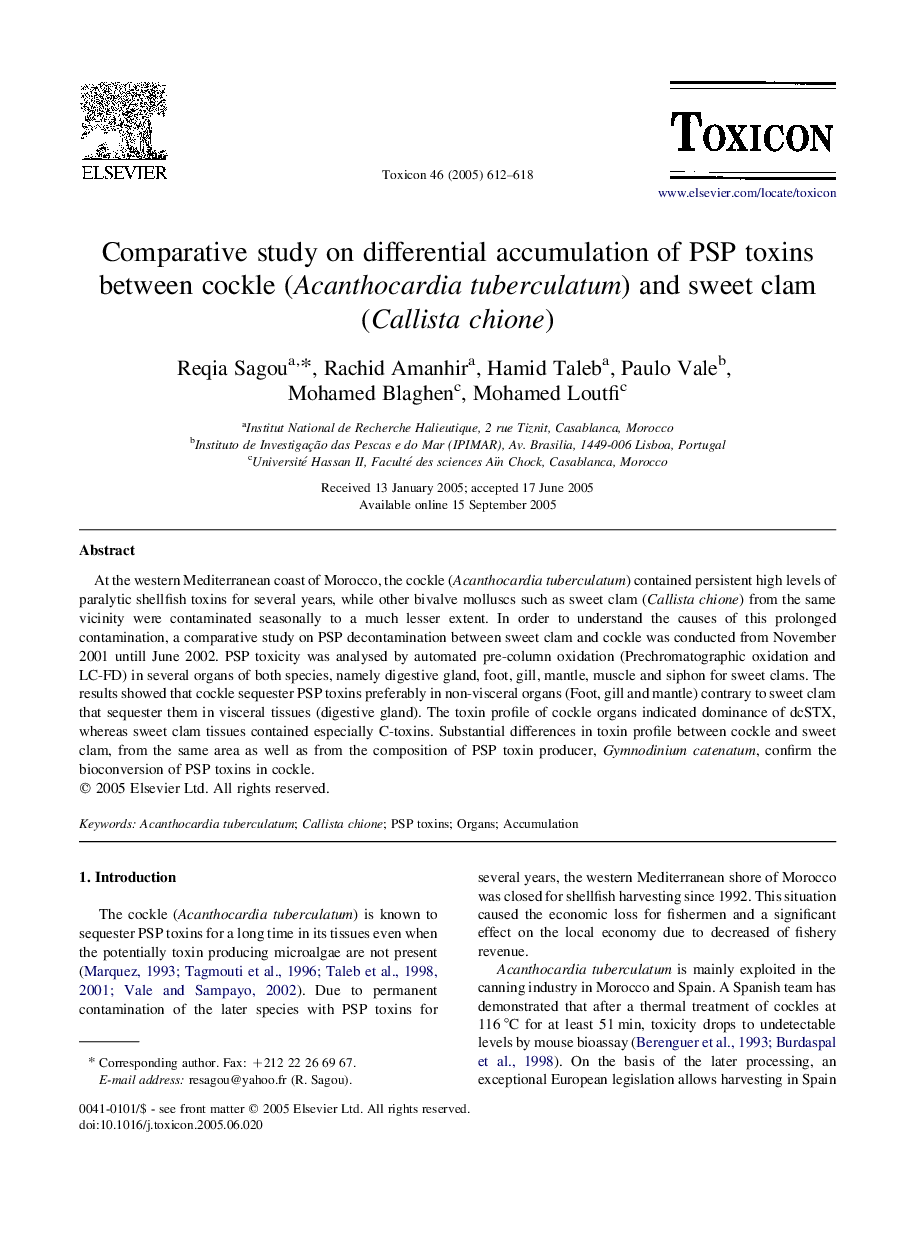| Article ID | Journal | Published Year | Pages | File Type |
|---|---|---|---|---|
| 10880190 | Toxicon | 2005 | 7 Pages |
Abstract
At the western Mediterranean coast of Morocco, the cockle (Acanthocardia tuberculatum) contained persistent high levels of paralytic shellfish toxins for several years, while other bivalve molluscs such as sweet clam (Callista chione) from the same vicinity were contaminated seasonally to a much lesser extent. In order to understand the causes of this prolonged contamination, a comparative study on PSP decontamination between sweet clam and cockle was conducted from November 2001 untill June 2002. PSP toxicity was analysed by automated pre-column oxidation (Prechromatographic oxidation and LC-FD) in several organs of both species, namely digestive gland, foot, gill, mantle, muscle and siphon for sweet clams. The results showed that cockle sequester PSP toxins preferably in non-visceral organs (Foot, gill and mantle) contrary to sweet clam that sequester them in visceral tissues (digestive gland). The toxin profile of cockle organs indicated dominance of dcSTX, whereas sweet clam tissues contained especially C-toxins. Substantial differences in toxin profile between cockle and sweet clam, from the same area as well as from the composition of PSP toxin producer, Gymnodinium catenatum, confirm the bioconversion of PSP toxins in cockle.
Keywords
Related Topics
Life Sciences
Biochemistry, Genetics and Molecular Biology
Biochemistry, Genetics and Molecular Biology (General)
Authors
Reqia Sagou, Rachid Amanhir, Hamid Taleb, Paulo Vale, Mohamed Blaghen, Mohamed Loutfi,
